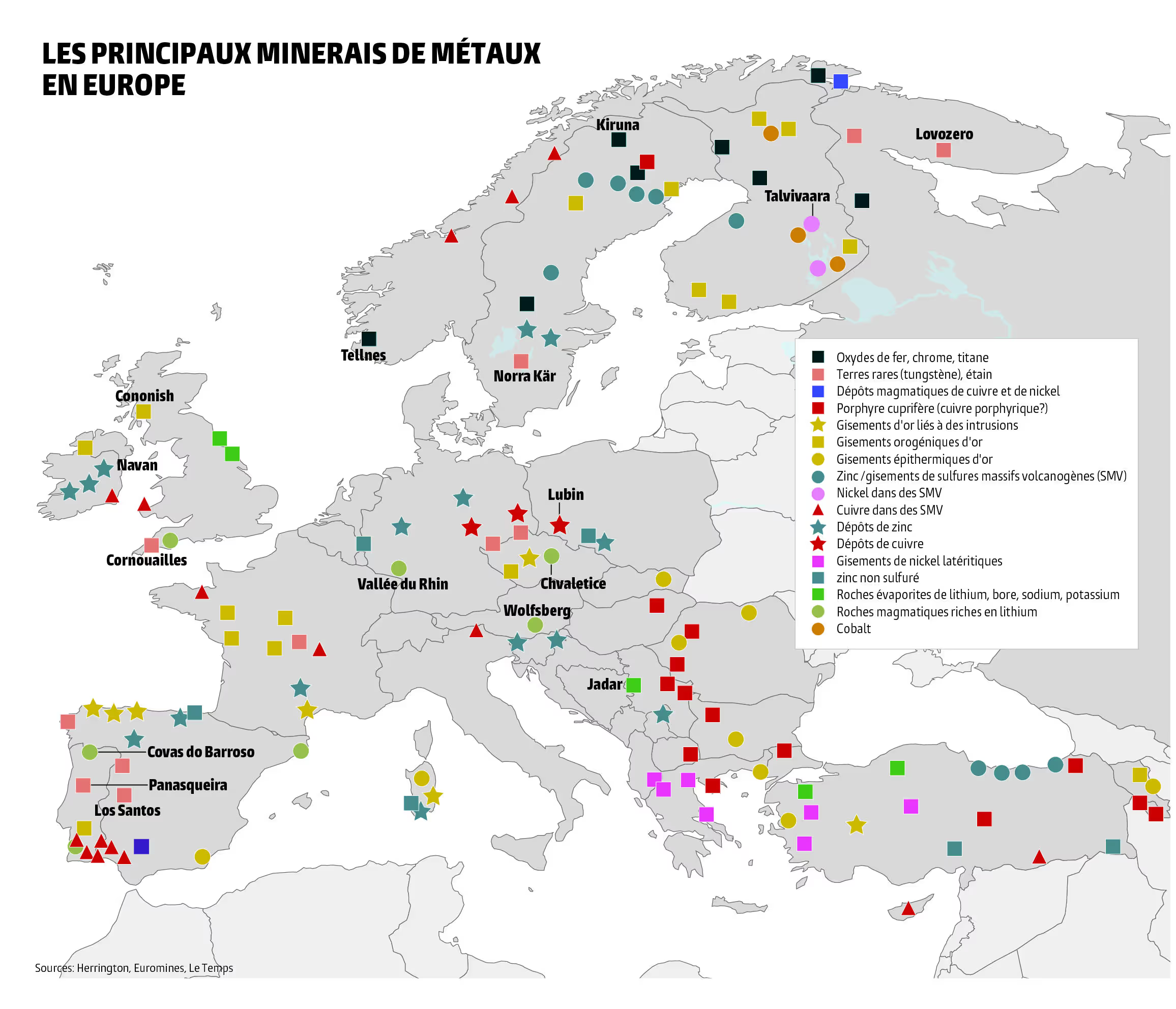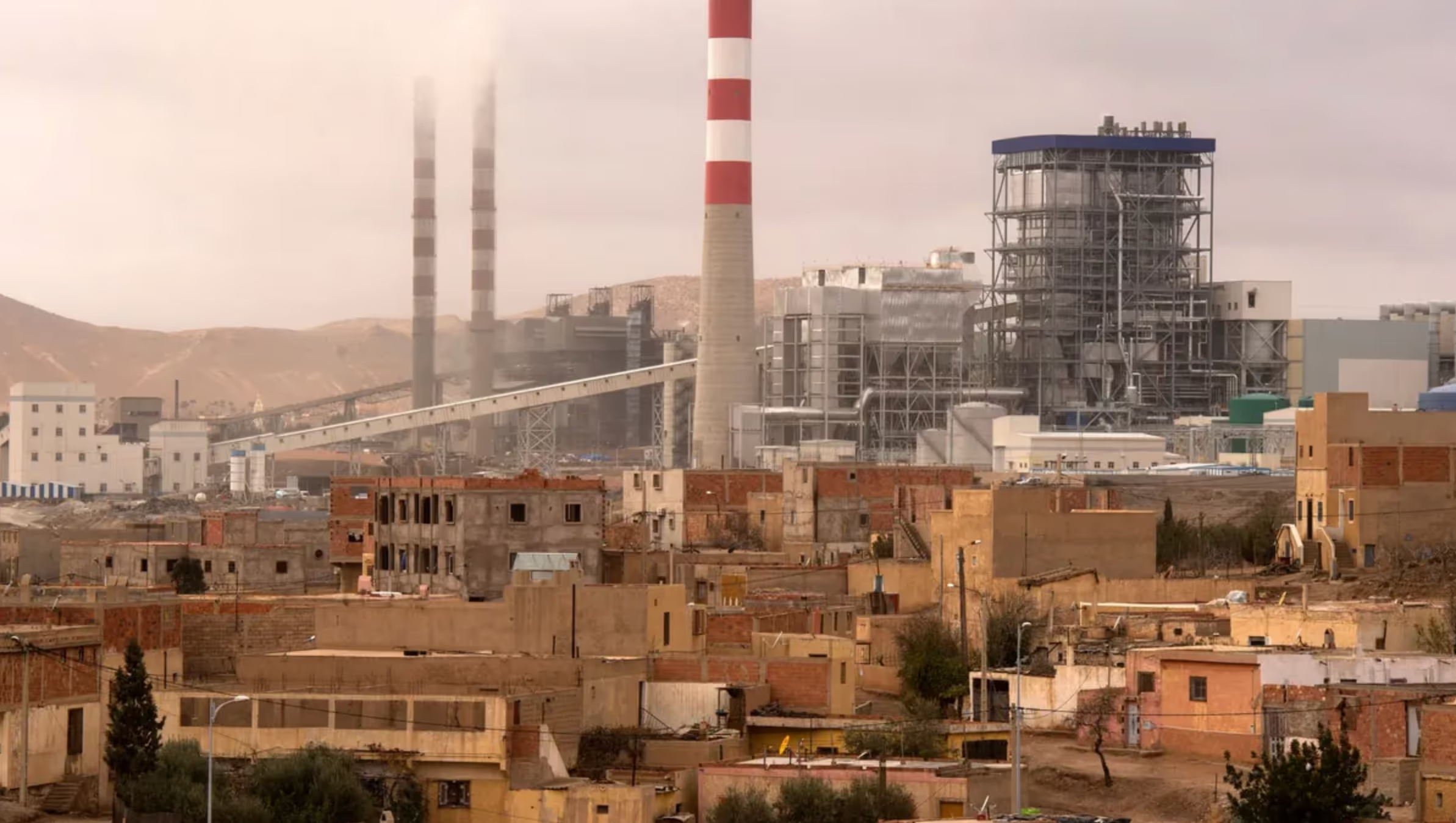An energy blackout is a general power outage that can affect a city, a region, or even an entire country. A power outage of this magnitude can occur when there is a significant imbalance between the amount of electricity fed into the electrical network and the electricity consumption. Indeed, in order to function properly, the stability of the electrical frequency of the network must be maintained around 50 Hertz, the balance point of the European network (60 Hertz in the United States).
When there is a surplus of electricity introduced into the network by power plants, the electrical frequency increases. Since power plants are designed to operate within a certain frequency range, exceeding it may automatically cause the power plants to be disconnected from the grid.
When electricity consumption exceeds the quantity injected into the network, the frequency decreases. This is a situation that can occur in winter, when the demand for energy increases for heating needs.
To avoid imbalances between electricity production and consumption, network operators can:
- Decrease or increase electricity production
- Reducing electricity consumption
- Importing or exporting electricity
- Unload (last resort solution consisting in cutting off the power to some consumers)
- Storing electricity
However, we must emphasize one important point: the risk of a blackout will exist as long as our lifestyles remain totally electro-dependent. We'll get to that later in this article.
https://youtu.be/Ut6kjMs29gE?si=KAhsul-rYjiWdYiN
An explanatory video of the newspaper Le Monde on the blackout phenomenon.
Causes of blackout
Specialized literature has established about 300 causes that can lead to the interruption of the electrical supply. These are classified into three main categories:
- Natural disasters: floods, heat waves, ice storms, pandemics disrupting the electrical sector, etc.
- Technical disasters: network overload, industrial (or even nuclear) explosions or accidents, technical and computer problems, etc.
- Man-made threats: sabotage, attacks, cyberattacks, human error, malice, electromagnetic weapons, etc.
In many cases, the causes are multiple. For example, a storm (natural disaster) can cause the network to be overloaded (technical disaster). To make things clear, the following four points focus on the mechanism that leads to a blackout.
Cascading overload
When a line breaks, the current continues to flow by transferring to the other lines in the network. But these lines have a maximum load capacity. When there is overload, they automatically switch off, which can lead to a cascading reaction affecting a larger or smaller area.
Overloading a line can cause another type of incident. The increase in load leads to an increase in the temperature of the electric cables (Joule effect). Under the effect of heat, the metal expands and the lines sag. Since the cables have no insulating sheath, if one of them comes into contact with a tree (and therefore with ground) the circuit breakers in the line explode instantly.
Local voltage drop
When a lack of power affects an area, the voltage drops in high-voltage lines. This drop in voltage reduces the transport capacity of the lines, creating bottlenecks on other lines, and therefore overloads. If the voltage drops too much, the automatons located in the electrical substations will cut the lines concerned to avoid contagion.
Collapse in frequency
When there is a significant imbalance between electricity consumption and production, the frequency of the network decreases. It is a very rapid phenomenon that requires the automation of reactive procedures starting at 49.5 Hertz in order to prevent the electrical system from collapsing. Certain parts of the network are then cut off according to an order of priority defined beforehand. If these measures remain insufficient, when the difference is between 2 and 4 Hertz, the power plants automatically cut themselves off from the network (island).
Desynchronization of part of the network
An electrical network occupying a large area may be cut in two by an incident affecting a specific area of said network. An imbalance between electricity production and consumption then occurs in the two isolated parts of the network. The latter can lead to a blackout if the connection between the two zones is not quickly re-established.
Sabotage, attack or cyberattack
A major blackout can also come from malicious acts. Terrorist groups, whether independent or financed by foreign states, could very well attack a territory's energy infrastructure in order to take control of it by force. Targeting the electrical grid is a classic tactic used by the military to subdue territory. We saw this recently with the Russian invasion of Ukraine. The Russian military has systematically targeted energy infrastructures to weaken Ukrainians, militarily and psychologically.
There is also a growing risk of a terrorist attack on a nuclear power plant. The newspaper Le Monde For example, we learned that reactor number 4 at the Doel power plant in Belgium was sabotaged in 2014. The damage was “considerable” but, thankfully, “the worst was avoided.” For how much longer?
Another growing threat are attacks carried out by hackers from cyberspace. The growing interdependence between digital and electrical networks contributes to increasing this risk.
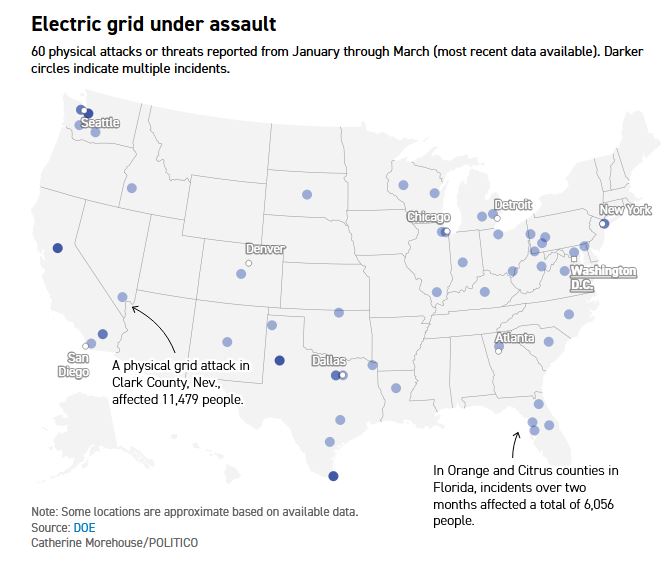
Climate chaos
It goes without saying that a runaway global climate will lead to ever more violent and devastating weather events, mechanically increasing the risk of blackouts. Climate scientists are already forecasting an increase in the frequency and severity of storms, hurricanes, droughts, and floods.
Solar eruption, a global blackout threat
Sometimes called coronal mass ejections or solar storms, these events are linked to the intense activity of our star. They are projections of extremely hot particles accompanied by powerful electromagnetic radiation. Depending on the intensity of these phenomena, disturbances in terrestrial radio systems are possible.
The 1Er September 1859, two huge solar storms hit Earth, causing the aurora borealis of extraordinary intensity. The solar storm was so powerful that the telegraph network was disrupted, with operators sometimes reporting electric arcs and sparks coming from their devices. But in 19th century Europe and the United States, there were still no electrical or telecommunications networks as developed as they are today. So we can't talk about a blackout. If such an event were to happen today, the consequences would be disastrous for all electro-dependent societies.
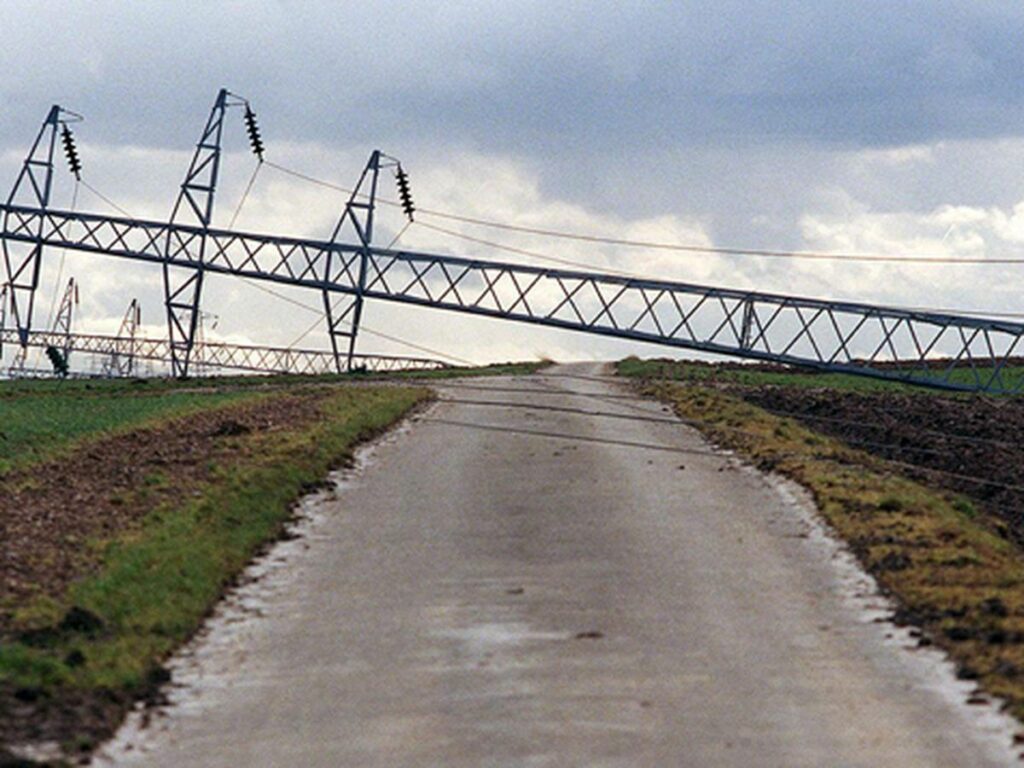
Consequences of a blackout
The effects of a power outage are gradual and vary considerably depending on the season (winter or summer), the time of day (day or night) and the duration of the outage. In winter, for example, a blackout can have a much greater impact than during the summer season.
Business sectors disrupted at various scales:
- Transport and traffic: road network, rail network, air traffic;
- Telecommunications and information technologies: fixed and mobile telephone, internet and datacenters, media (radio, television, press);
- Supply: food, drinking water, wastewater treatment;
- Health: hygiene, production and delivery of medicines, health services, waste disposal;
- Finance, banking and insurance: banking services, electronic payments, stock exchange;
- Authorities: crisis management, emergency services and armed forces.
Here's what, hour by hour, a blackout lasting more than a week could look like without quick intervention from outside help.
Immediately after a blackout
Transport: road traffic is very severely disrupted by the absence of signaling, tunnels closed in the absence of ventilation and dry breakdowns that affect both electric and thermal vehicles (gas station pumps no longer work without electricity). Accidents are increasing and congestion is preventing emergency services from arriving quickly. In public transport, passengers are stuck or severely slowed down. The vast majority, if not all, of trains stop running due to the lack of signalling, no current in the catenaries and congestion.
2 to 8 hours later
The number of abandoned vehicles is increasing and road transport is beginning to be affected by the power outage. Trucks have difficulty reaching their destination, for reasons of access or because the goods can no longer be received. Broken down motorists are left to their own devices. In public transport, trains and subways have been evacuated. The previously crowded train stations are beginning to empty. Sales continue in shops with the means at hand, however refrigerated products are beginning to deteriorate. Everywhere, heating or air conditioning systems (depending on the season) are out of service.
Since the supply of drinking water relies, among other things, on electric pumps, the water shortage starts. As for the disposal of wastewater, it has problems. Feces and urine begin to accumulate. Hospitals are overloaded due to accidents caused by the blackout and can no longer provide all care (including dialysis) without emergency power supply. The queues are getting longer in front of the banks monitored by the police.
8 to 24 hours later
Traffic is decreasing on the roads, and with it, the number of accidents. People who still have cash can buy products in supermarkets that remain open. But the lack of cash is causing trouble and requires police intervention. On dairy farms that do not have a backup generator, cows must be milked by hand. Without it, animals die from infection. The situation is getting worse in hospitals where patients continue to arrive in a state of shock, dehydration or hypothermia. The electricity still available is reserved for priority operations, so the kitchens are closed. Refrigerated medications become unusable. Meanwhile, the banking sector continues to function as best as it can. Withdrawing money is still possible but the queues are getting longer at the counters.
24 hours to 7 days later
The sharp drop in road traffic, due to the lack of fuel and the closure of most shops, businesses and public establishments, is causing an equally significant decrease in the number of accidents. Most food warehouses cease operations within the first two days. Supermarkets that are still open empty within two to five days. Some trains are running again to transport essential goods, and road trucks are primarily assigned to the same mission. People can no longer cook without electricity, so they focus on products that can be consumed immediately. With the rise of a black market, the consumption of spoiled products is increasing and making people sick. To cook their food, they start fires or use gas stoves, which start fires that are difficult to put out due to the fire hydrants being decommissioned. In industrial agriculture, losses are piling up due to the sector's total dependence on electricity for greenhouses and animal production.
Emergency generators in critical infrastructure have all but run out of fuel. The water supply stops everywhere, as does the treatment of wastewater. Hygienic conditions are increasingly affected by the accumulation of faeces, especially in hospitals. Surgeons only perform the most priority operations. The energy that is still available is rationed. If people think the blackout is going to last, they take their money out of the banks. The counters close one after the other when cash replenishment is no longer possible. Banks expect heavy losses, but stock exchanges continue to operate on backup power.
7 days and more
Roads and highways are deserted, and the risk of getting stuck deters many from driving. In the medical sector, most pharmacies are closed and hospitals are in agony. The shortage of medicines is increasing and hospital staff must make ethical choices in the face of patients who parade. Without outside help, medication and energy supplies, the health system is likely to collapse. When the basic needs of the population are no longer met, crowd movements occur and riots break out. Crime is on the rise. Those who can flee the disaster area do so when possible. If the affected region is too large, community logics are formed and replace the broken system.
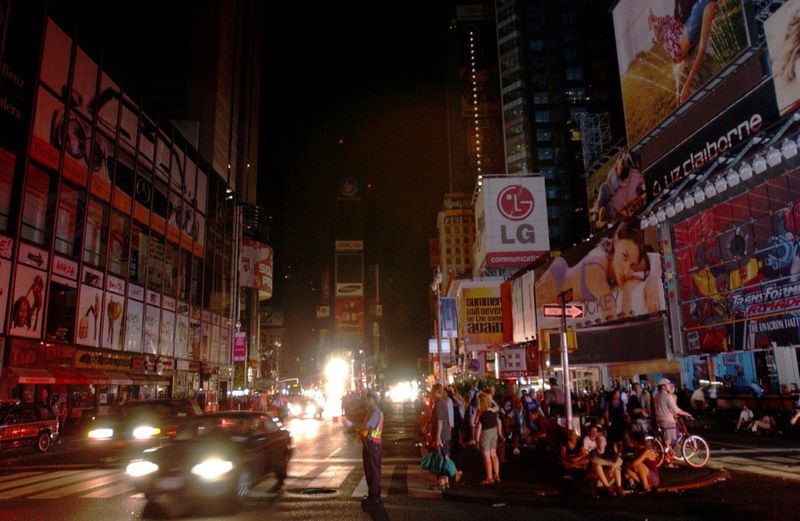
Blackouts that made history
You might think that blackouts are a thing of the past, or that it's a problem that only affects very poor countries. In reality, the biggest blackouts in history have occurred in the last twenty years and have often affected technologically advanced countries.
1965: Blackout in northeastern North America
On November 9, 1965, a technical problem caused a power outage that affected a territory of more than 200,000 km² ranging from Ontario to Canada and numerous American states (Connecticut, Delaware, Maryland, Massachusetts, New Hampshire, Massachusetts, New Hampshire, New Hampshire, New Jersey, New Jersey, New Jersey, New Jersey, New Jersey, New Jersey, New Jersey, New Jersey, New Jersey, New York, New York, Pennsylvania, Maryland, Massachusetts, New Hampshire, Massachusetts, New Hampshire, New Jersey, New Jersey, New Jersey, New Jersey, New Jersey, New Jersey, New York, New York, Pennsylvania, Maryland, Massachusetts Over 30 million people were without power for a period of up to 1 pm.
1999: Storms Lothar and Martin shake Europe
On 26 and 27 December 1999, two storms devastated Europe. In France, more than 20,000 structures and 9,000 poles have been destroyed. According to RTE, 38 400 kV lines, a hundred 225 kV lines and more than 400 63 kV and 90 kV lines are out of service. More than 1,000 high and very high voltage pylons are damaged or ashore and 184 stations are out of service. On December 28, more than 3.6 million homes were plunged into the dark. Power was back on for 91% of them on 31 December but hundreds of thousands of people remained without electricity until 5 January.
2003: New York plunged into darkness
On August 14, 2003, a power outage affected the eastern United States and Canada following the sudden shutdown of 21 power plants. Approximately 50 million people are affected including residents of New York, Cleveland, Detroit, Toronto and Ottawa. Some infrastructures were able to start working again after two hours, others required more than a day to restart. The outage caused elevators, trains and subways to stop, and severely disrupted all telecommunications services as well as hospitals and airports.
2003: Italy paralyzed by a general blackout
On September 28, 2003, a large-scale blackout occurred at 3:20am in Italy, Sardinia and Elba, as well as in some parts of Switzerland. Initial reports from the network operator GRTN revealed that a storm damaged the overhead power lines in the Lukmanier Pass, which transport electricity from Switzerland to Italy. This led to a sudden increase in demand on two 400 kV lines carrying electricity between France and Italy, which also jumped. These events triggered a cascade of reactions from automatic systems leading to the collapse of the Italian electricity grid. In all, 56 million people were affected by this sudden power outage due to bad weather.
This large-scale power outage is analyzed in detail in the video below.
https://youtu.be/PUHix_hRETY?si=0P7OY7sw2THwPYwS
An explanatory video by Youtuber Mr. Bidouille.
2006: Brazil and Paraguay unplugged
On November 10, 2006, a major power outage affected Brazil and Paraguay due to violent winds and torrential rains. In total, eighteen Brazilian states are disrupted, with the country losing 40% of its total production in an outage that has raised questions about the robustness of the energy network. Residents of Sao Paulo, Rio de Janeiro, Mato Grosso do Sul and Espirito Santo were the most affected, with a total power outage. The whole of Paraguay was also plunged into the dark for about 30 minutes. The sudden outage triggered panic and confusion in Rio, paralyzing the city's subway system, leaving hundreds of people stuck in elevators and wreaking havoc at airports. In total, around 60 million people were affected by the power outage.
2012: The biggest blackout in history in India
On 30 and 31 July 2012, the third largest producer and consumer of electricity in the world was affected by a collapse of its electrical network due to extreme heat waves. The rainy season arrived later that year, handicapping the production of hydroelectric dams. The lack of water has also led farmers to use more energy to operate pumps to irrigate rice fields in Punjab and Haryana. Weather conditions may be responsible for this blackout, but the true cause has never been revealed.
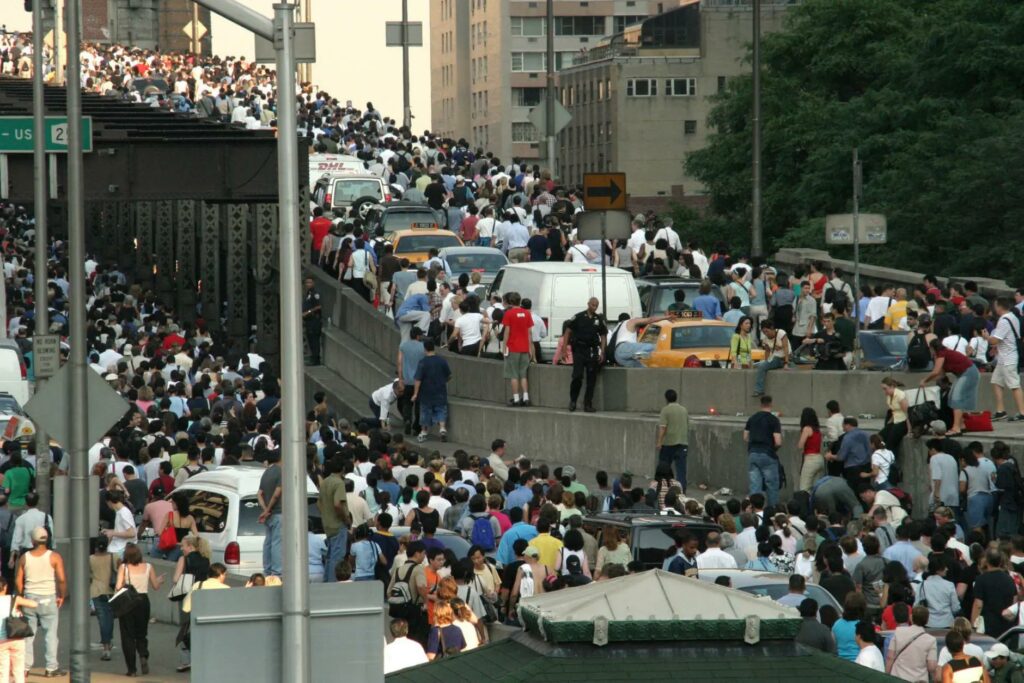
Some books about the blackout
Blackout: Tomorrow it will be too late (Mark Elsberg)
This best-selling novel explores the consequences of a break in electrical networks in a society that has become totally dependent on the electricity “fairy”. All the conditions that make industrial life possible would vanish. The wastewater treatment plants and distribution networks would stop working, the nuclear power plants would no longer be cooled, the communication and transport signaling networks would stop instantly.
When the Lights Went Out: A History of Blackouts in America (David E. Nye)
An interesting book by the historian David E. Nye on the blackouts that affected the United States from 1935 to the present day. He sees blackouts not as mere technical failures, but as military tactics, social disturbances, networked city crises, the result of political and economic decisions, a sudden encounter with the sublime, and memories etched in photographs. Our existence colonized by artificial light is so natural to us that when the lights go out, the darkness seems abnormal. Nye describes the development of electrical grids in the United States, a technological trajectory that made blackouts possible.
Our electro-dependence in question
Subject to the permanent threat of a blackout, we are entitled to question the validity of this total dependence on electricity. Is it an intelligent development strategy for a humane society? How can we continue to tolerate being made dependent on technologies that rely on a very fragile and mineral-intensive infrastructure? How can you put the future of your children, grandchildren, and great-grandchildren in the clutches of a system that can collapse at any moment, because of something as trivial in the long history of history as a solar flare, drought, or winter storm?
The explanation for this is actually very simple: these technological trajectories were never chosen by the people democratically. They were imposed on populations from the top of the pyramid, by the technocratic class (intellectuals, scientists, engineers, bureaucrats, politicians, captains of industry, etc.). These elites imposed these technological choices because they allowed them to increase their ability to dominate nature, including us.
Stopping and dismantling the technological system now seems to be the only rational way out to permanently remedy the risk of a blackout. We need to break out of this vicious circle of electro-dependencies to regain our autonomy and prevent the annihilation of the conditions that make life possible on Earth, for humans as for other forms of life.






